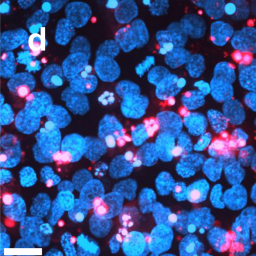Contradictory effects of chemical filters in UV/ROS-stressed human keratinocyte and fibroblast cells
Main Article Content
Abstract
Chemical UV filters are frequently applied as active ingredients in sunscreens to protect from detrimental effects of UV radiation. Regardless, many of these compounds are not well characterized concerning their capacity to counteract UV induced reactive oxygen species (ROS). Intracellular ROS release is an early event upon UV exposure and a crucial trigger of reaction cascades that may provoke adverse effects both in the short- and long-term. We report a strategy to assess the capacity of UV filters (ecamsule, oxybenzone, and menthyl anthranilate) to counteract UVA/UVB stress in the human keratinocyte HaCaT and the wildtype Fibs E6/E7 fibroblast cell lines. The reduction of ROS levels was taken as primary endpoint. The effect of treatment on the cells’ metabolic activity was analyzed as an indicator of viability post-treatment to investigate potential immediate and late (photo)toxicity. Additionally, the compounds’ antioxidative capacity was investigated using an azo-based radical generator. Established antioxidants, quercetin and N-acetylcysteine, were used as controls. Data showed remarkable differences in the mode of action of the chemical UV filters, ranging from protective to pro-oxidative properties, indicating the need for more detailed mode of action-based investigations. Certainly, additional consideration and evaluation will be necessary to further extrapolate these in vitro data for the assessment of in vivo exposure situations. However, the presented approach enables parallel investigations of photoprotective and phototoxic effects of UV filters, and thus can complement and extend existing in vitro testing strategies.
Article Details
Articles are distributed under the terms of the Creative Commons Attribution 4.0 International license (http://creativecommons.org/licenses/by/4.0/), which permits unrestricted use, distribution and reproduction in any medium, provided the original work is appropriately cited (CC-BY). Copyright on any article in ALTEX is retained by the author(s).


